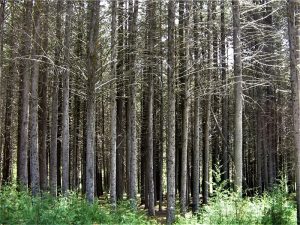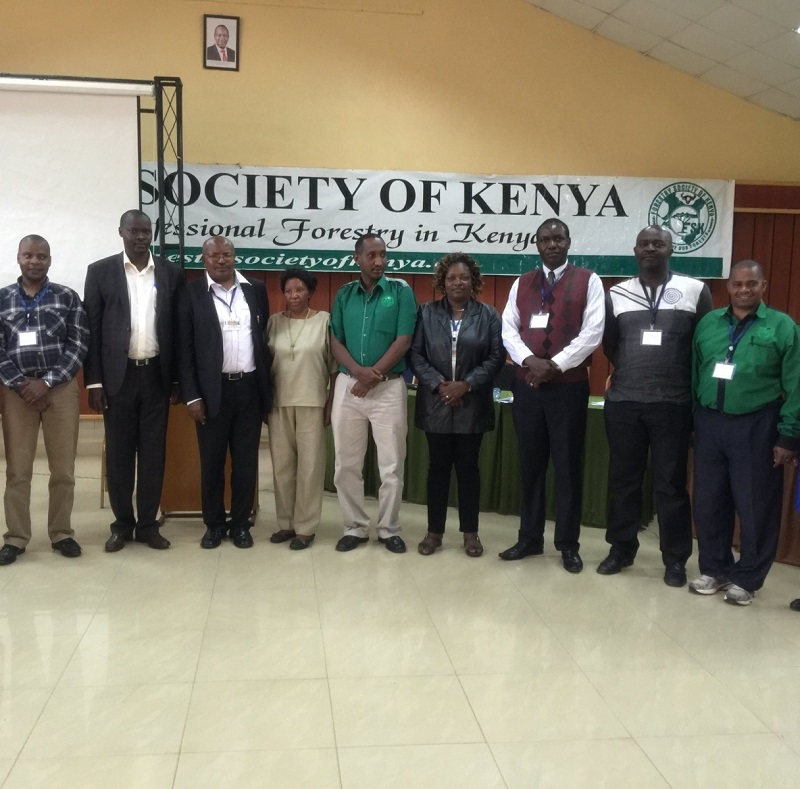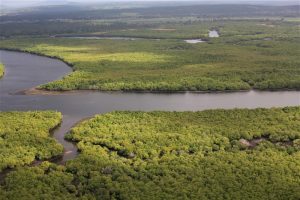By Mercy Njane . February 15, 2022
Introduction
The forestry sector in Kenya has been evolving over the years, from management to training, research, and development. Efforts towards afforestation, reforestation, and restoration have also increased as various forest sector actors take lead in the activities. While these efforts are effective in ensuring sustainable forest management, the use of technology is quickly picking global attention. Technological development in the recent past has created new opportunities for the sector. Through technologies, the entire forestry value chain is set to be transformed in terms of productivity and efficiency. In this article, we share some of the innovations, tools, and technologies in the forestry sector aimed at increasing efficiency in operations and also providing guidance on tree growing in Kenya.
Solar Heat Storage for Drying Forest Tree Seeds (SoFTS)
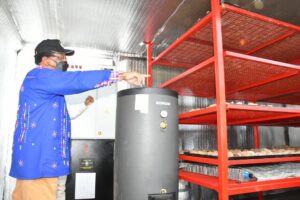
The SoFTS technology housed at KEFRI Headquarters, Muguga aims at drying tree seeds in the shortest time. The technology is a collaboration between KEFRI, The Brunel University, and Enso Impact and is a first in Kenya and in Africa in the forestry sector. Unlike other tree seed drying methods that take approximately six weeks to dry the seeds, SoFTS takes only three days.
This not only shortens the seed drying time but also saves costs in reduced energy consumption. The drying technology relies on solar energy which is also a step towards sustainable production hence reducing carbon emissions. Due to the reduced seed drying time the technology takes, it will help in increasing KEFRI’s capacity to increased annual seed production to help meet the growing demand for high-quality seeds.
Seedballs Technologies
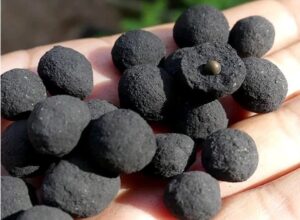
Pioneered by Seedballs Kenya, the Seedballs technique is a low-cost and effective forest regeneration technique. It involves the coating of seeds with charcoal dust which is mixed with a nutritious binder. The coated seeds are easy to disperse reducing seed wastage. The coat also protects the seed from predators and direct sunlight giving the seed a better survival opportunity. Using this technology, seeds are planted directly on the degraded landscape which reduced transplanting costs and also ensures the development of a strong rooting system for the trees. The technology also allows for aerial seeding techniques to be used in large-scale projects as was used in the restoration of the Mau Complex.
Plantech Kenya
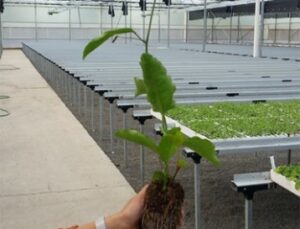
Plantech Kenya Limited is a seedling nursery company that propagates seedlings for mass production. The company introduced mass production of forest tree species in their line of business with three tree species namely cypress, eucalyptus, and cider seedlings. With the increasing demand for forest tree seedlings in the country, there is a need for a mass supply of the seedlings. Plantech mass produces forest tree seedlings through vegetative propagation where clonal materials are replicated for mass production which helps meet the demand for the same.
Species Site Matching Tool

A product of Gatsby Africa, SSMT helps tree growers select the most suitable tree species for their site. The tool uses soil, rainfall, altitude, soil types, soil depth, and species performance to assist tree growers and investors identify the appropriate tree species. SSMT can be accessed using Georeferenced PDF or ArcGIS online. The tool provides information on how suitable a tree species is on the selected site showing a suitability range of very suitable to not suitable.
KEFRIApp
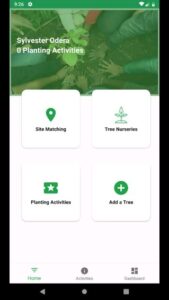
Trees have the ability to grow in any region, whether the highlands or the drylands such as the ASAL regions with the largest parcels of lands in Kenya. However, it is crucial to growing the right tree species in the right ecological zone. The KEFRIApp is a site-species matching tool that assists tree growers to identify the correct tree species to grow in a certain ecological zone. The mobile platform offers guidance to the users on the types of tree species to grow in the desired area. The application that was launched in 2021 aims to provide not only species-site matching services but also provide information on the location of tree nurseries on the platform and also document tree planting activities on a real-time basis. The application is available for download on Google Play Store.
Earth Observation Platform Tools
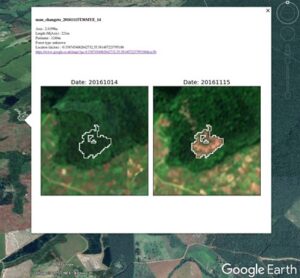
Kenya Forest Service (KFS) in collaboration with the National Centre for Earth Observation at the University of Leicester co-developed a rapid deforestation monitoring system. The system sends alerts every 5 days to help detect any changes in the forest resources such as changes in the forest cover. The system uses Copernicus Sentinel-2 images at 10m spatial resolution allowing detection of even small-scale logging in the forests.
The system developed under the Forest 2020 project sends near real-time alerts to the forest rangers and managers who can then patrol the region identified. The satellites send images to the server which can then be compared with the previous images to ascertain the changes. The system is critical for monitoring forest changes effectively at both a regional and national scale. It also enables the rangers to react quickly to any threat that may arise. At the same time, the system helps KFS monitor the tree cover in Kenya. Such monitoring tools act as early warning systems to halt further destruction by humans, through illegal logging or settlement, or through wildfires.
Tree Nursery Registration System
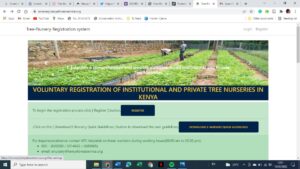
The Voluntary Registration of Institutions and Private Tree Nurseries in Kenya aims to establish a comprehensive and credible database for Institutional and Private tree nurseries, map tree nurseries in the country, enhance networking and provide market linkages for tree seedlings and also improve tree seedlings production and nursey management standards. The portal, spearheaded by Kenya Forest Service (KFS), aims at promoting buying of certified, high-quality seedlings and providing a market for the tree seedlings in private and institutions’ tree nurseries. The database can act as a link between buyers and the tree nurseries.
Timbeter Application

Sustainable forest management is dependent on various factors among them ensuring efficiency in operations. The Timbeter App is already in use within Kenya Forest Service, it is expected to revolutionize public plantation management. Timbeter App is a digital timber measurement solution using artificial intelligence and machine learning technology for accurate log detection. It aims at eradicating illegal logging and also improving the monitoring and supply of timber using the unique algorithm.
The application helps in reducing the cost of log inventory and is the easiest and quickest solution to the measurement of round-wood. Timbeter is an easy-to-use mobile platform that provides services such as inventory and measurements. Replacing the manual paper-based measurements with Timbeter will help ensure efficiency and transparency in the forestry sector. The application is available on Google Play Store and Apple Store.
Cross-Laminated Timber

BuildX Studio is a company in the construction industry spearheading the use of cross-laminated timber (CLT) in the industry. The company aims to reduce embodied carbon in buildings by using alternative, low-carbon building materials. CLT involves using small pieces of timber and gluing them together to create huge panels. CLT has several benefits over concrete and steel including; it is stronger, lighter which reduced the materials needed for foundation development, and is up to 70% faster to construct. For effective mass production of timber for construction, there is a need to increase commercial forestry in the country for the supply of the construction material. BuildX constructed a prototype at Tatu City where interested individuals can visit to see the use of CLTs in construction.



